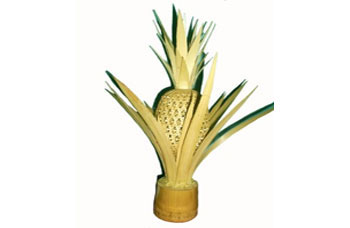Bamboo is very versatile and widely used for every day materials and products in rural areas of the countries of origin. Bamboos are fast growing, with most species being harvested in 3-5 years, and some species reaching maturity in a year. It is therefore a low cost material that is strong and durable and can be used for just about anything from house building to functional and decorative objects such as bamboo pots! Among some of the artefacts in daily use that are crafted from this material are bamboo rice steamer, chairs, stools, fountains, hats, baskets, mats and rugs, beds, cups, bowls, pots, eating utensils, chopsticks, fishing traps and rods, boats, carts, musical instruments such as flutes, and toys.
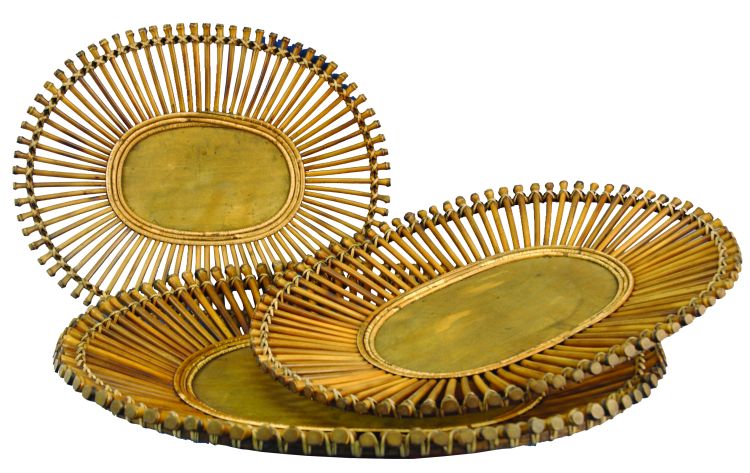
Bamboo: The raw materials are brought from Belgaum district in Karnataka. They are measured in 'Gala' (1 bundle), each Gala consists of 10 bamboos.
Water: Bamboos are immersed in water which helps the bamboo to become soft and flexible to bend.
Commercial pigments/paints and local color powders: Used for coloring bamboo craft.
Thin metal wire/strip: Used to give support to the base of the product and also to keep it stiff. Once the product is halfway complete the metal strips are removed slowly from the basket.
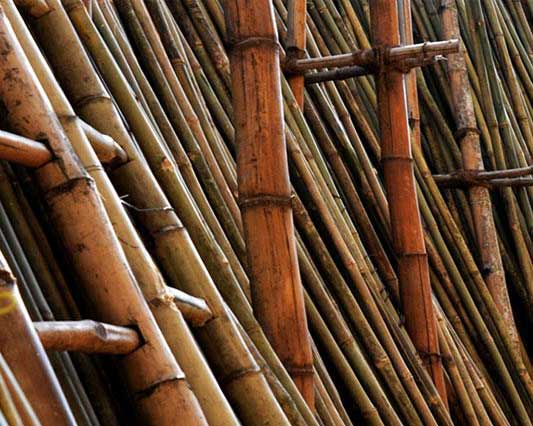
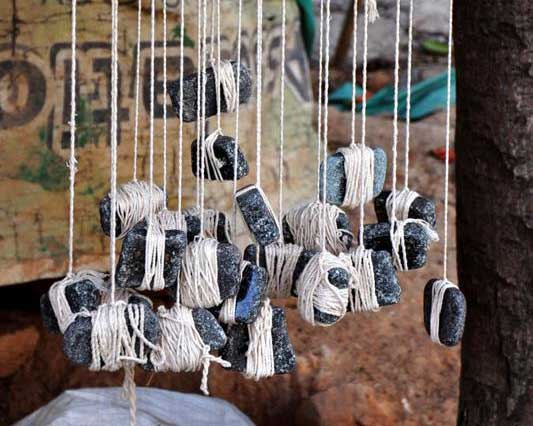
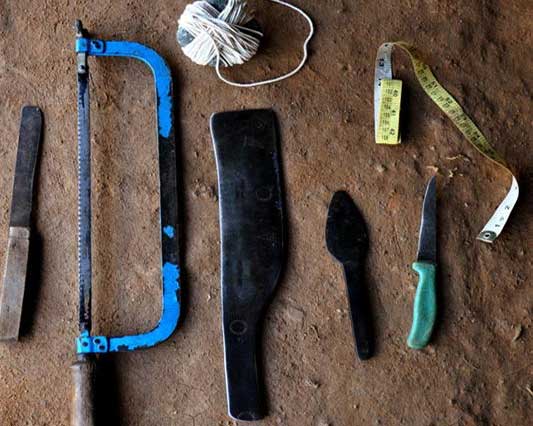
1. Cutting: Cutting a piece of bamboo with a crosscut saw requires technique. It is best done on a device that holds the bamboo firmly while it is being cut. While the right had pushes the saw back and forth, the left hand gradually turns the bamboo clockwise. Turning the bamboo counter-clockwise while it is being cut will damage the peel.
2. Scraping: Scraping is the process of removing the outermost skin of the bamboo while the use of a special tool called the bamboo scraper. Scraping however, may be done with a bolo.
3. Marking: Before splitting a piece of bamboo, it is necessary for the worker to divide the bamboo into convenient sizes. Marking prevents unnecessary waste.
4. Splitting: Splitting is a process of dividing a piece of bamboo into sizes convenient for splinting. It is best done with the use of a specially made bolo which thins gradually on both sides towards the cutting edge. The bolo is driven gently with a mallet. A mallet is a wooden hammer. Using a hammer, destroy the back portion with a bolo.
5. Splinting: Splinting is a process of dividing a piece of bamboo into thin strips for weaving. A specially designed bolo is used for this purpose.
6. Width Sizing: Width sizing is the technique of making the width of bamboo splints uniform. It is best done with th use of a special tool called the width sizer.
7. Thickness Shaving: Thickness shaving is the process of making the thickness of splints uniform. It is done best by passing the splints through a tool specially designed for the purpose.
8. Bleaching: Bleaching is treating bamboo splints by boiling.Boiling usually done in boiling pan made for the purpose, dissolves resinous substances in the bamboo and makes it no longer attractive to weevils.
9. Dyeing: The process of introducing coloring substances in the material by boiling is dyeing. Adding a little salt while boiling makes the color fast. Dyed materials should be washed in fresh water to remove the excess dyes.
